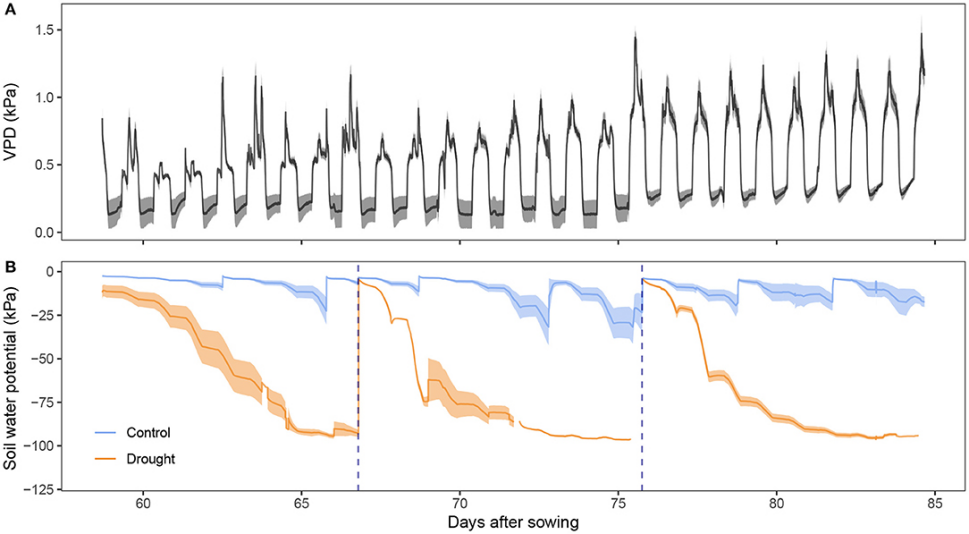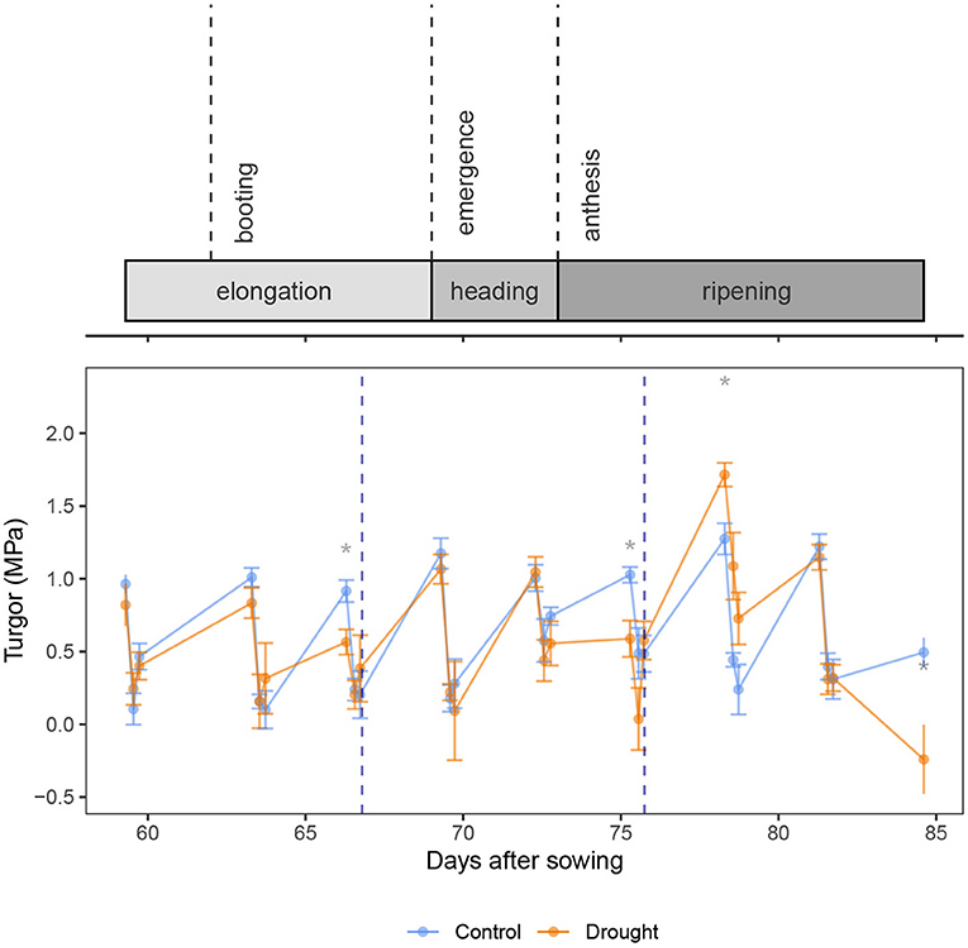品质至上,客户至上,您的满意就是我们的目标
技术文章
当前位置: 首页 > 技术文章
Pessl植物生理生态系统:小麦花前和花后干旱期间的渗透调节
发表时间:2022-03-24 14:17:58点击:906
来源:北京博普特科技有限公司
分享:
花前干旱预计会极大增加小麦(Triticum aestivum L.)产量损失,小麦是世界上最重要的作物之一。大多数研究只在成熟期研究花前干旱的影响。开花前植物的生理学以及干旱期间它是如何受到影响的研究较少。我们的研究集中在开花前和开花后干旱期间小麦植株的生理模式。为此,我们以较高的时间频率测量了植物不同部位的叶木质部水势、渗透势和含水量:每隔3天测量,每天三次。试验在孕穗前开始,直到开花后2周。干旱胁迫是通过在开花前和开花后各发生一次的膨压损失后停止灌溉和复水来诱导的。目的是研究渗透调节的模式,当其被用于抵御干旱时以及在植物物候发育期间策略是否发生变化。我们的数据没有给出每日渗透调节的迹象,但确实显示了干旱期间叶片和茎中渗透势的微妙控制。在高干旱胁迫下,渗透势会降低以避免进一步的水分损失。开花前复水能迅速恢复叶片水势和渗透势。开花后,复水恢复了旗叶的水势,但茎和旗叶的渗透势持续较低。因此,开花后渗透调节维持的时间更长,表明开花后的植物比开花前在渗透调节中投入更多的能量。我们假设这是因为植物认为开花后发育的麦穗是比茎更重要的碳水化合物汇集,这是开花前的碳水化合物汇集,以后用作储备。茎中的低渗透势允许膨压维持,而旗叶中的低渗透势导致叶片膨压增加,超过了对照植株的水平。这使叶片在干旱条件下发挥功能,并确保水分被重新定向到旗叶,而不是用于补充茎贮藏。


Osmotic Adjustment in Wheat (Triticum aestivum L.) During Pre- and Post-anthesis Drought
Pre-anthesis drought is expected to greatly increase yield losses in wheat (Triticum aestivum L.), one of the most important crops worldwide. Most studies investigate the effects of pre-anthesis drought only at maturity. The physiology of the plant before anthesis and how it is affected during drought is less studied. Our study focused on physiological patterns in wheat plants during pre- and post-anthesis drought. To this end, we measured leaf xylem water potential, osmotic potential and water content in different plant parts at a high temporal frequency: every 3 days, three times a day. The experiment started just before booting until 2 weeks after flowering. Drought stress was induced by withholding irrigation with rewatering upon turgor loss, which occurred once before and once after anthesis. The goal was to investigate the patterns of osmotic adjustment, when it is used for protection against drought, and if the strategy changes during the phenological development of the plant. Our data gave no indication of daily osmotic adjustment, but did show a delicate control of the osmotic potential during drought in both leaves and stem. Under high drought stress, osmotic potential decreased to avoid further water loss. Before anthesis, rewatering restored leaf water potential and osmotic potential quickly. After anthesis, rewatering restored water potential in the flag leaves, but the osmotic potential in the stem and flag leaf remained low longer. Osmotic adjustment was thus maintained longer after anthesis, showing that the plants invest more energy in the osmotic adjustment after anthesis than before anthesis. We hypothesize that this is because the plants consider the developing ear after anthesis a more important carbohydrate sink than the stem, which is a carbohydrate sink before anthesis, to be used later as a reserve. Low osmotic potential in the stem allowed turgor maintenance, while the low osmotic potential in the flag leaf led to an increase in leaf turgor beyond the level of the control plants. This allowed leaf functioning under drought and assured that water was redirected to the flag leaf and not used to refill the stem storage.
相关阅读